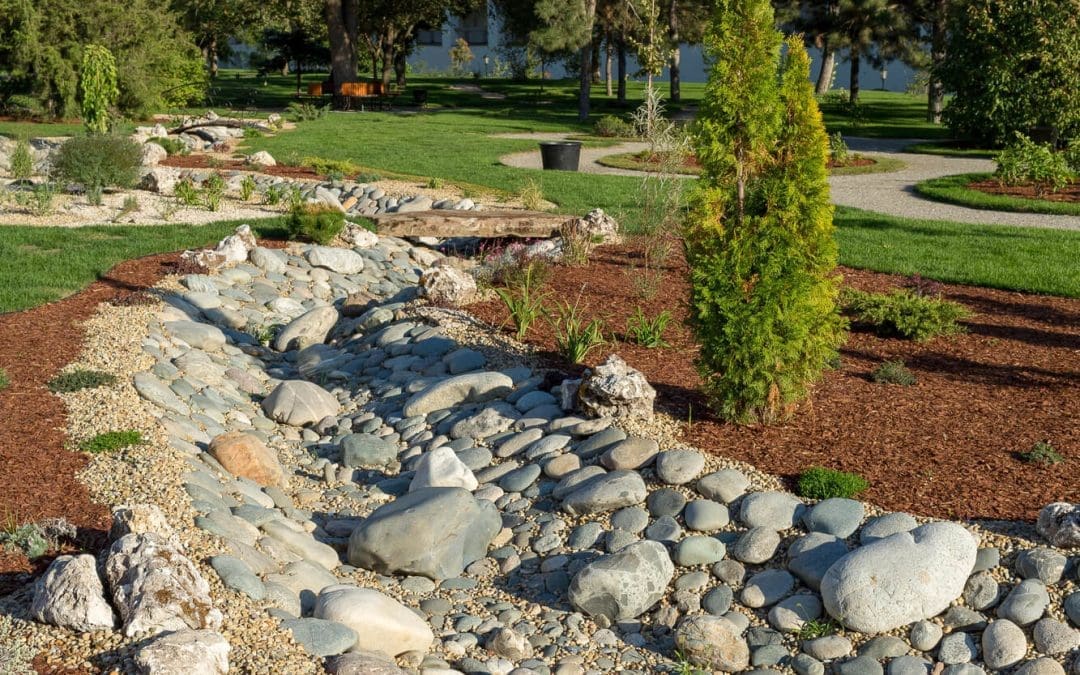Proper drainage is critical for maintaining a healthy and functional property. Adequate drainage prevents waterlogging, erosion, and potential damage to your house and its foundation. Whether you’re dealing with a small backyard or more acreage, implementing strategies to enhance drainage is essential. This article will explore various practical ways to improve drainage on your property.
1. Assess Your Landscape Before You Improve Drainage on Your Property
Begin by conducting a thorough assessment of your property’s topography. Identify low-lying areas, slopes, and any natural water flow patterns. Understanding the landscape will help you determine the most vulnerable areas and plan appropriate drainage solutions.
2. Install French Drains
French drains are a popular and effective solution for redirecting excess water away from specific areas. A French drain consists of a perforated pipe surrounded by gravel, which is then covered with soil. It efficiently collects and redirects water, preventing it from pooling around your property.
3. Create Swales to Improve Drainage on Your Property
Swales are shallow, landscaped channels that direct water away from problem areas. Strategically placing swales on your property will encourage water to flow naturally along these channels, preventing water accumulation in low-lying regions.
4. Build Dry Creek Beds
Dry creek beds are aesthetically pleasing and functional solutions for managing water flow. Constructing a dry creek bed involves digging a trench and lining it with stones or rocks to create a visually appealing channel. This feature enhances drainage and adds a natural, interesting element to your landscape.
5. Invest in Permeable Surfaces
Replace impermeable surfaces like concrete or asphalt with permeable alternatives like gravel, permeable pavers, or grass pavers. These materials allow water to penetrate the surface and reduce runoff, promoting better drainage.
6. Optimize Gutters and Downspouts to Improve Drainage on Your Property
Ensure that your gutters and downspouts are clean and free of debris. Additionally, consider installing gutter extensions to direct water further away from the foundation of your property. This simple measure will help prevent water from accumulating around your home.
7. Improve Drainage with Plant Water-Absorbing Vegetation
Integrate plants that thrive in moist conditions and have deep, water-absorbing roots. Strategically place wetland plants, like sedges and rushes, in low-lying areas to help absorb excess water and improve drainage.
8. Grade Your Property
Proper grading involves shaping the landscape to encourage water flow away from buildings and toward appropriate drainage areas. Consult with a professional landscaper to ensure your property is correctly graded for optimal drainage.
9. Install Sump Pumps
Consider installing a sump pump in areas prone to water accumulation, especially basements. These devices actively pump out excess water to prevent flooding and water damage.
10. Regular Maintenance
Maintain your drainage systems regularly by removing debris, checking for clogs, and ensuring all components are in good working condition. Regular maintenance ensures the longevity of your drainage solutions.
Improving drainage on your property is a proactive approach to safeguarding against water-related issues. Implementing these practical strategies will enhance water flow, prevent water damage, and create a more resilient and sustainable landscape. Consult a landscape professional for tailored solutions based on your property’s unique characteristics, ensuring long-term success in managing water drainage effectively.
Oasis Home Inspections provides inspection services in Brevard County, Florida, including marine structure inspections. If you’re buying or selling a home, contact us to request an appointment.
